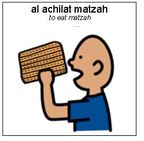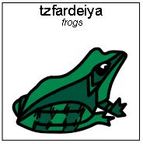
If you look at if from an educator’s perspective, Passover is definitely Number One in terms of an opportunity to teach our children our history and traditions. This is because the Seder was set up as a teaching tool. It uses all modalities (reading, singing, movement, tactile activities, etc.) making it a multisensory, accessible experience for all types of learners, of all ages – and of all abilities.
Families have become more creative at their Seder tables and are finding ways to engage all types of learners. Below is a list of suggestions from Jewish educators who work with students with different abilities to add a little flair to your Seder – and maybe just move it to the top of your favorites list:
During the Seder – Face it, the Seder is LONG, even for the grownups. Since the children cannot partake of four glasses of wine, providing them with individual schedules with the steps of the Seder can be very helpful, shares Tara Holden, Sunday Program teacher for Gateways: Access to Jewish Education. Gateways has a downloadable activity placemat which includes the order of the Seder: http://bit.ly/1gtMMVM
Holden also adds that “Tactile Hagaddahs can be created and used for children who like feeling objects.” Having multiples of each food item on the table can help cut down on wait time and anxiety, suggests occupational therapist Maxine Heron. “We always have multiple Seder plates to avoid competition,” says occupational therapist Ilene Greenwald. “Our kid-friendly one was child designed, decorated and covered (“laminated”) with a plastic plate.”
More than telling the story – Make maggid, the retelling of the story, a highlight of your Seder. One idea is to hand out finger puppets and have the kids act out the story while a grownup narrates. Alternatively, Heron suggest a full-blown re-enactment, complete with fun costumes and props. “Carry baby dolls in baskets to symbolize Baby Moses. Use cardboard blocks to simulate building the pyramids and walk over a wiggly jump rope to simulate crossing the Reed Sea. Play toy instruments and tambourines and sing Miriam’s song.” For older kids, she suggests creating questions and playing Passover Jeopardy. Gateways’ B’nei Mitzvah tutor Dara Tye suggests making the story personal by pretending that you are leaving Egypt. “Go around the table and share what you would pack if you had to leave in a hurry.”

Blood – drop red food coloring in water
Frogs – stretchy, squeezy, rubber, or wind-up toy frogs
Lice – shower caps, itch your heads
Beasts – stuffed or small plastic animals
Cattle Disease – little cows that moo
Boils – Band-Aids, red circle stickers to stick on arms and legs
Hail – pop bubble wrap, beat a toy drum, shake ice in a bowl then feel it, cotton balls
Locusts –bug rings or small plastic insects
Darkness – large, adult sunglasses or soft eye masks
Death of the firstborn – a tough one, suggestions welcome!
Keeping them busy – In addition to the multitude of activities above, during grownup Hagaddah reading, there are also tactics to keep the children engaged other than handing over your electronic devices. Having crayons and Passover coloring pages, activities and sticker books available will help keep them occupied, says Heron. If the kids sit all at one table, consider covering their table with butcher block paper and letting them decorate it. Having small plates of healthy food on the table (fruits and veggies) for the kids to munch on also helps, since it keeps their energy level up until the main meal is served. Occupational therapist Rochelle Goldin does a scavenger hunt, giving clues to each part of the Seder. “We eat the karpas in the living room. The next clue leads us to do a 10 plague story on the stairs, etc. It gives the kids a chance to move around the house until we end up with the last clue sending everyone to the dinner table for the meal.”
Passover is one of everyone’s favorites for a reason: it’s fun! And like everything else in life, the more you put into it, the more you – and your family – get out of it. Chag sameach – Happy Passover!
For more Passover resources and activities, visit Gateways online Passover Resource Center: http://www.jgateways.org/Resources/Passover
Rachel Fadlon
Director, Marketing and Communications
This post has been contributed by a third party. The opinions, facts and any media content are presented solely by the author, and JewishBoston assumes no responsibility for them. Want to add your voice to the conversation? Publish your own post here. MORE
